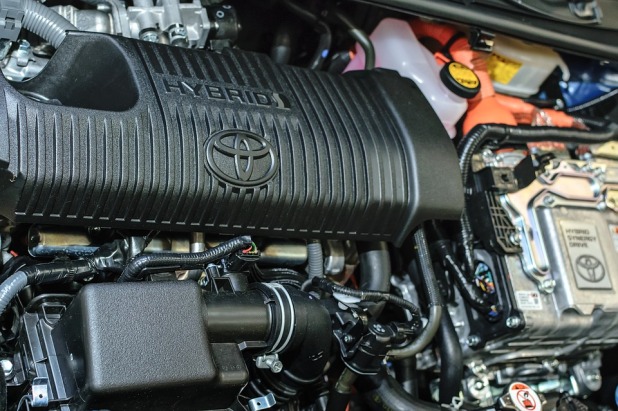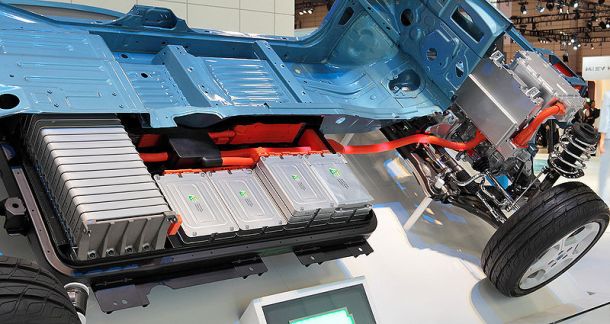Vehicles of the near future will benefit greatly from nanotechnology and nanomaterials. The global expectations for lower emissions and fuel economy are creating huge demands for lightweight, durable, and low-cost materials to replace expensive metals and composites, and nanotechnology can help meet those demands.
Nanotechnology1 refers to the production of advanced materials at the scale of about 1 to 100 nanometers, almost as small as individual atoms and molecules. Manipulating materials at this scale has the potential to lead to stronger, more durable and more sustainable components without compromising weight and flexibility.
Despite the numerous breakthroughs that nanotechnology has already brought about in manufacturing and design, we’re only seeing the tip of the iceberg on what this new technology can offer for the future of automotive manufacturing.

The True Significance of Nanotechnology in Automotive Engineering and Design
Designing and manufacturing a new vehicle presents an array of challenges. New cars should be light enough to enable faster acceleration while consuming less fuel. However, the materials need to be rigid enough to maintain safety and predictable handling. New engine technology will require durable and flexible metals that can better withstand high heat and astronomic compression ratios as designers push to make vehicles continually faster and more efficient. There is also a high demand for exterior and interior materials which are both aesthetically pleasing and durable and sustainable enough to withstand many years of use. Nanomaterials have potential to provide the perfect solution to this challenge because they are often lighter, stronger, and infinitely more durable than conventional metals and plastics.
Better Engine Durability
Compared to engines from older times,2 present day ones are already smaller, lighter and can produce almost twice the amount of horsepower and torque. However, the downsides are still heat and friction. More advanced high-compression engines with direct fuel injection and forced induction will be able to operate at insanely high temperatures. Nanomaterials could shatter the operational constraints of a modern internal-combustion engine. The infusion of nanomaterials and aluminum, for example, could create a new type of material that will be more durable without compromising on weight.3 This new nanoaluminum will be precisely engineered to create lighter, more powerful, and more efficient engines.

Nano-infused Fluids and Engine Coatings
Nanotechnology is at the forefront of next generation types of fluids, lubricants, and engine coatings. Nanofluids will be engineered to offer the perfect particle shape, size and concentration (three vital determinants affecting wear and friction in a vehicle) to offer better lubricity than conventional fluids. This will lead to better protection against heat, friction, and wear. Nanoparticles of gold and copper are found to be effective in developing a new type of liquid protective film to replace conventional fossil-fuel based oils, making the car engine more sustainable.4
Protective outer layers made up of nanoparticles of ceramic are also being developed that would be useful for engine components.5 Taking advantage of ceramic’s unique thermal and friction properties,6 this new material will offer extraordinary potential as a means of reducing abrasion and wear within the engine. The result will be a cleaner burn and enhanced performance for many years to come. This means that engines will be more long lasting and won’t need to be replaced or fixed as often as they are now.
Nanotechnology in Fuel Cells
As the world transitions from fossil fuel burning to full electric and hydrogen vehicles, nanotechnology is at the heart of advanced fuel cell technology.7 One type of fuel cell uses hydrogen and will need to store hydrogen in a semi-solid state. The use of nanotechnology and carbon nanomaterials will make this a reality.8 Nano-infused fuel cells may provide a safer and less expensive way to manufacture hydrogen-powered vehicles.
Powerful and Clean Batteries
Nanoparticles of silicon could be used in the creation of the next generation lithium-silicon batteries.9 Nanotechnology is being developed to enhance the cathode materials in an ordinary lithium-ion and lithium-polymer battery. Nano-infused batteries in electric vehicles are on their way to offering longer range, shorter charging times, and a more environmentally-friendly construction.

Interior and Exterior Automotive Applications
Regular outer clearcoat automotive paint layers are among the most vulnerable aspects of the finish, particularly if exposed to harsh elements. There is an increasing demand for materials which will maintain the paint layer’s appearance for as long as possible. Nanosized inorganic fillers will chemically bond with the clearcoat molecules to form an elastic and highly rigid coating.10 This will give the finish a lasting shine while offering supreme protection against fading, cracking, and wear.
Nanotechnology is one answer for creating state-of-the-art interior fabrics and cockpits. The new materials will offer comfort and will stay aesthetically pleasing even under extreme use and direct UV exposure.11 Also, anti-microbial and odor resistant agents such as silver and titanium oxide could be embedded directly into fabrics.12 This would result in a non toxic, durable fabric which will be capable of oxidizing microorganisms permanently even as the fabric ages over time.

Conclusion
With a wide array of applications for every conceivable part of a modern car nanotechnology looks set to transform vehicle manufacture. Nanomaterials will make it possible to create cleaner, cheaper, more durable, more sustainable and more reliable vehicles.
Guest blogger Giles Kirkland is a dedicated car expert with passion for combining the newest technologies with healthy lifestyle. He enjoys commenting on the latest automotive innovations. As a sustainable living advocate, he shares his knowledge with other drivers and technology enthusiasts. Feel free to read more articles by Giles on Twitter and at Oponeo, or contact him at [email protected].
EDUCATIONAL RESOURCES
- American Chemical Society: Teacher’s guide for “Drained: the Search for Long-Lasting Batteries” – ChemMatters, 2017 (original article is print only)
- TryEngineering.com: Nano Waterproofing lesson plan
REFERENCES
- National Nanotechnology Initiative: What is Nano? n.d. Retrieved from: https://www.nano.gov/nanotech-101/what/definition
- Deaton, J. “5 Ways Modern Car Engines Differ from Older Car Engines” Howstuffworks.com, 2018. Retrieved from: https://auto.howstuffworks.com/5-ways-modern-car-engines-differ-from-older-car-engines.htm
- Surendran, R., Manibharathi, N., & Kumaravel, A. Wear Properties Enhancement of Aluminium Alloy with Addition of Nano Alumina. FME Transactions 2017. 45: 83-88. Retrieved from: http://www.mas.bg.ac.rs/_media/istrazivanje/fme/vol45/1/13_rsurendran_et_al.pdf
- Ali, M. & Xianjun, H. Improving the tribological behavior of internal combustion engines via the addition of nanoparticles to engine oils. Nanotechnology Reviews. 2015, 4(4): 347-358. doi: 10.1515/ntrev-2015-0031
- Asmatulu, R. “Nanocoatings for corrosion protection of aerospace alloys.” In Corrosion Protection and Control Using Nanomaterials, 2012, 357-374. doi: 10.1533/9780857095800.2.357
- pwray. Structure and Properties of Ceramics, The American Ceramic Society. 2018. Retrieved from http://ceramics.org/learn-about-ceramics/structure-and-properties-of-ceramics
- oponeo.co.uk. Hyundai Fuel Cells: The Future is Here… Again. 2018. Retrieved from: https://www.oponeo.co.uk/tyre-article/hyundai-fuel-cells-the-future-is-here-again
- UnderstandingNano.com. Nanotechnology in Fuel Cells. Retrieved from: https://www.understandingnano.com/fuel-cells.html
- Kiel University. Silicon as a new storage material for the batteries of the future. 2018. Retrieved from: https://phys.org/news/2018-04-silicon-storage-material-batteries-future.html
- Yari H., Mohseni M., Messori M., & Ranjbar Z. Tribological properties and scratch healing of a typical automotive nano clearcoat modified by a polyhedral oligomeric silsesquioxane compound. European Polymer Journal. 2014. 60: 79-91. doi: 10.1016/j.eurpolymj.2014.08.023
- VelocityHonolulu.com. Ask a Technician: Will Excessive Sunlight Damage My Car? 2017. Retrieved from: https://velocityhonolulu.com/will-excessive-sunlight-damage-my-car/
- Federal Environment Agency (Umweltbundesamt). Fact Sheet Nano Products: Use of Nanomaterials in Textiles. 2013. Retrieved from: https://www.umweltbundesamt.de/sites/default/files/medien/376/publikationen/datenblatt_nanoprdukte_textilien_e.pdf
Cover image by Mathier
